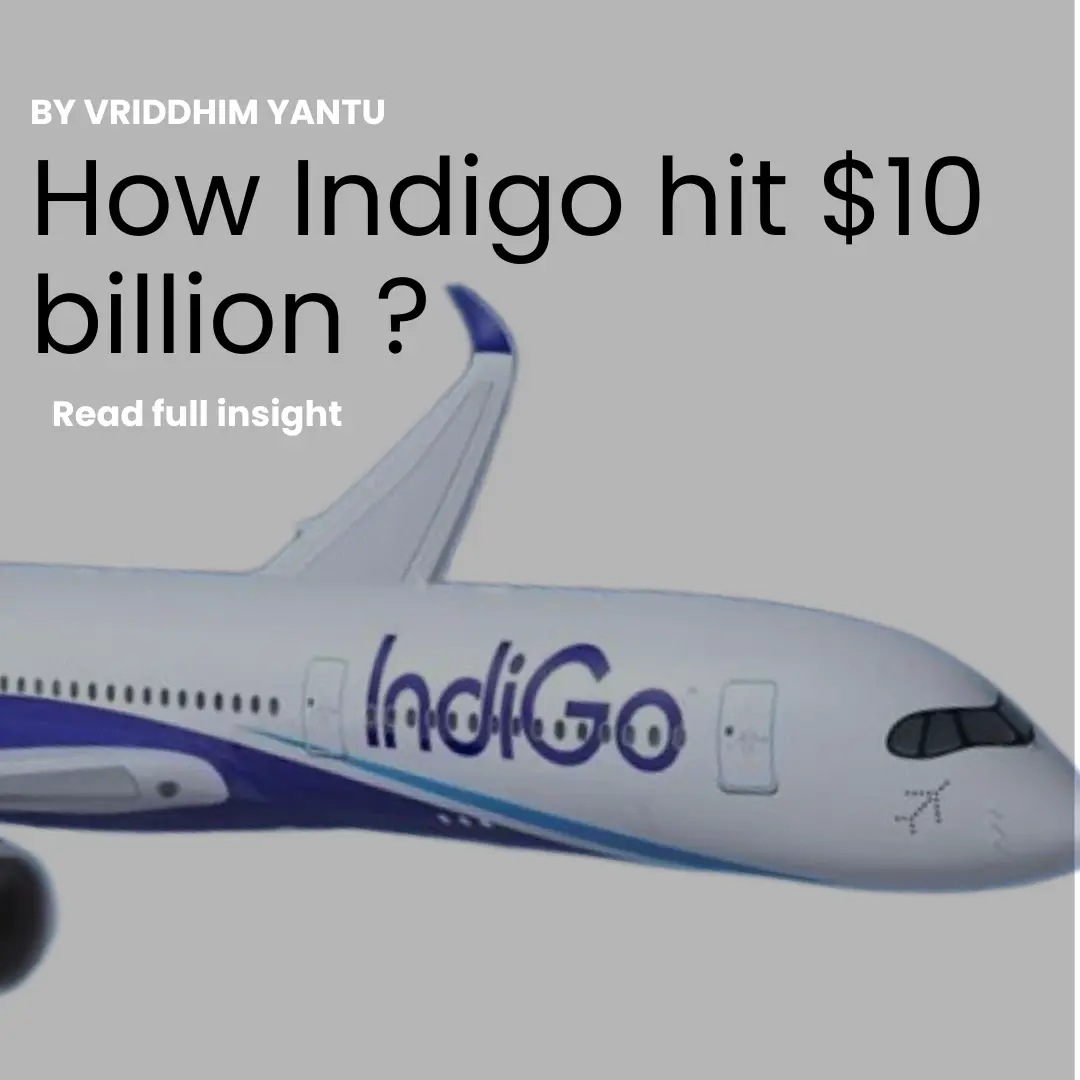How IndiGo Reached $10 Billion in Revenue

IndiGo, India’s largest airline, recently hit a major milestone: it crossed the $10 billion revenue mark. This is not just a number—it represents a remarkable transformation in the aviation industry, especially for a country like India where air travel is still developing in many regions. In this breakdown, we’re going to explore exactly how IndiGo achieved this growth, the strategy behind its success, and what it means for the broader aviation sector.
The Scale of the Achievement
Let’s begin with the numbers. IndiGo posted a revenue of over ₹83,000 crore in the fiscal year 2024, which is roughly $10 billion. That’s a 25% jump from the previous year. This wasn’t just driven by ticket prices—it was also about scaling operations, boosting passenger load, expanding international routes, and better fleet management. Just a few years ago, this kind of figure would’ve seemed far-fetched for an Indian airline. But IndiGo turned that into reality.
IndiGo didn’t just grow top-line numbers. Its net profit for FY24 stood at ₹8,172 crore—its highest ever. This was on the back of efficient cost structures, strategic expansion, and strong domestic demand.
Why IndiGo’s Model Works
So, what’s the secret behind IndiGo’s performance? It’s not luck—it’s a strategy built on scale, simplicity, and sharp execution. IndiGo follows a low-cost carrier (LCC) model. That means it keeps things basic: no frills, no luxuries—just fast, efficient flying. In exchange, it offers low fares that attract a huge volume of travelers.
IndiGo also benefits from being the first choice for most budget-conscious travelers in India. The airline has over 60% domestic market share and operates more than 2,000 flights a day. It’s not just a dominant player—it’s practically the face of Indian air travel now.
Fleet Expansion & Route Strategy
A big part of the $10 billion story is IndiGo’s massive fleet and aggressive route expansion. It currently operates over 360 aircraft and has one of the largest orders in aviation history—nearly 1,000 planes pending delivery. The idea? Scale like never before.
IndiGo has expanded beyond domestic routes into key international corridors. It now flies to over 110 destinations, including recent additions in Central Asia, Southeast Asia, and Europe. The goal is clear: make IndiGo a regional giant in Asia, not just India’s favorite.
Operational Efficiency
IndiGo’s operational efficiency deserves attention. It has among the highest on-time performances (OTP) in India. Its quick turnaround time allows more daily flights per aircraft, which means better asset utilization. Also, its average age of aircraft is among the lowest globally—this keeps fuel efficiency high and maintenance costs low.
The airline also uses a single aircraft type for most of its operations (A320 family). This standardization simplifies pilot training, maintenance, and spare part management, lowering costs across the board.
Cost Control & Fuel Management
Fuel is one of the biggest expenses for any airline, but IndiGo’s scale and fuel contracts help it hedge better than others. It also passes on some of the volatility in ATF (aviation turbine fuel) prices to passengers through surcharges without losing volume thanks to its demand consistency.
Additionally, the airline’s focus on ancillary revenues—like baggage fees, seat selection, in-flight sales, and cargo—adds meaningful income while keeping ticket prices low. This strategy is what makes the LCC model sustainable.
Leadership & Culture
Behind the scenes, leadership has played a pivotal role. IndiGo’s top management has remained committed to operational excellence over flashy innovation. The focus is always on reliability, punctuality, and cost control—boring, maybe, but highly effective.
The airline’s employee culture is another unsung hero. Pilots, crew, and ground staff are trained with discipline, and service consistency remains a top priority. This contributes directly to customer loyalty and repeat business.
The Pandemic Reset
Let’s not forget, IndiGo didn’t escape the pandemic unscathed. Like most airlines, it posted massive losses in FY21. But instead of scaling back permanently, the airline used the crisis to renegotiate contracts, trim fat, and position itself for the post-COVID boom. This helped it recover faster than peers.
Passenger volumes bounced back quicker in India than in many Western markets, and IndiGo was ready to capitalize on that surge. The result? It leapfrogged back into profitability and emerged even stronger than before.
What’s Next for IndiGo?
Crossing the $10 billion milestone is not the finish line—it’s the new baseline. IndiGo plans to double its international footprint, especially with wide-body aircraft like the Boeing 777 and Airbus A321XLR coming into the picture. The airline is already experimenting with long-haul routes via wet leasing, and its entry into Europe and Australia is in sight.
Also in focus is digital transformation. IndiGo is investing in automation for bookings, customer service, and even flight operations. It’s preparing not just to fly more people—but to do it smarter and more profitably.
Final Thoughts
IndiGo’s $10 billion revenue feat is a testament to smart strategy, relentless execution, and knowing your customer. It proves that even in a highly competitive industry like aviation, it’s possible to scale, stay profitable, and create long-term value.
As India becomes the third-largest domestic aviation market globally, the airline that best understands scale and discipline will lead the skies. Right now, IndiGo is clearly in that cockpit seat.